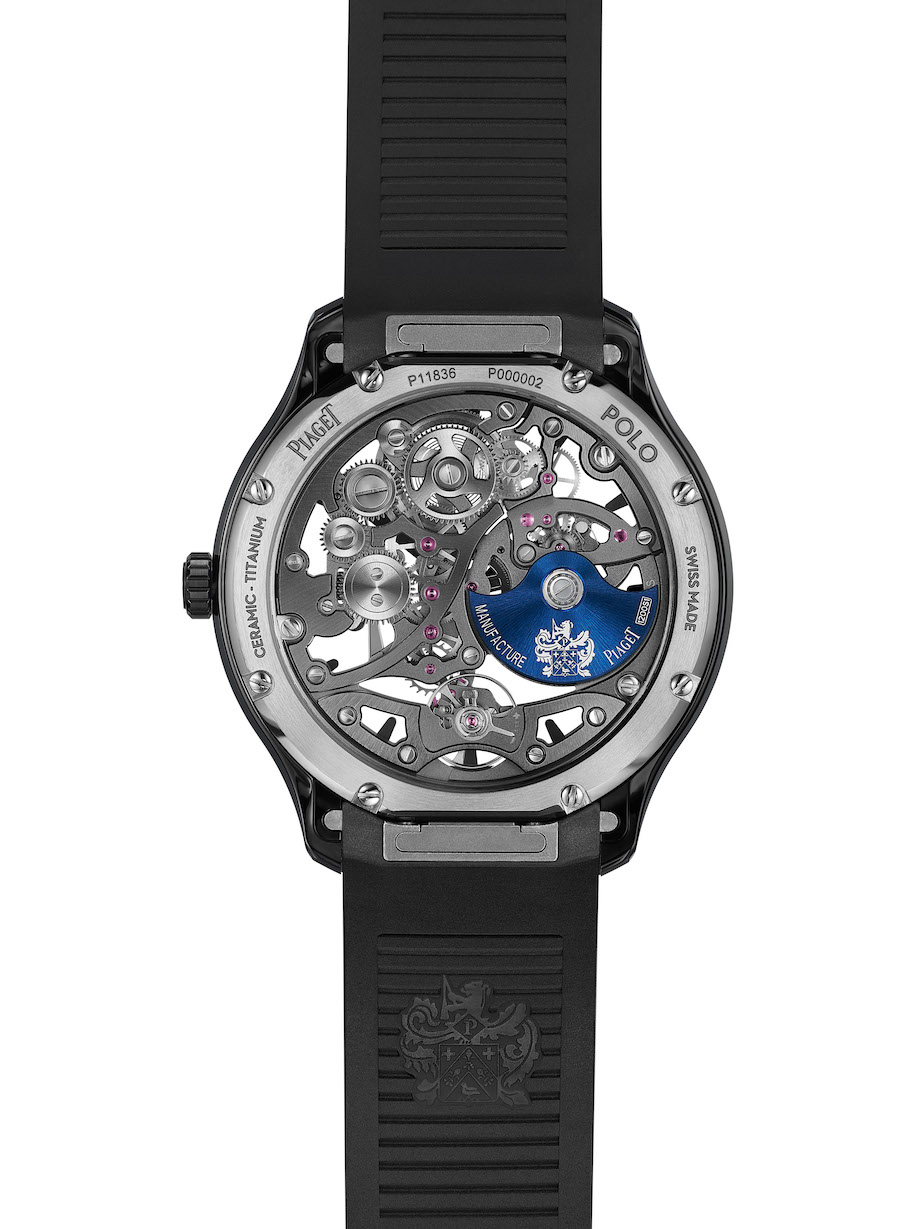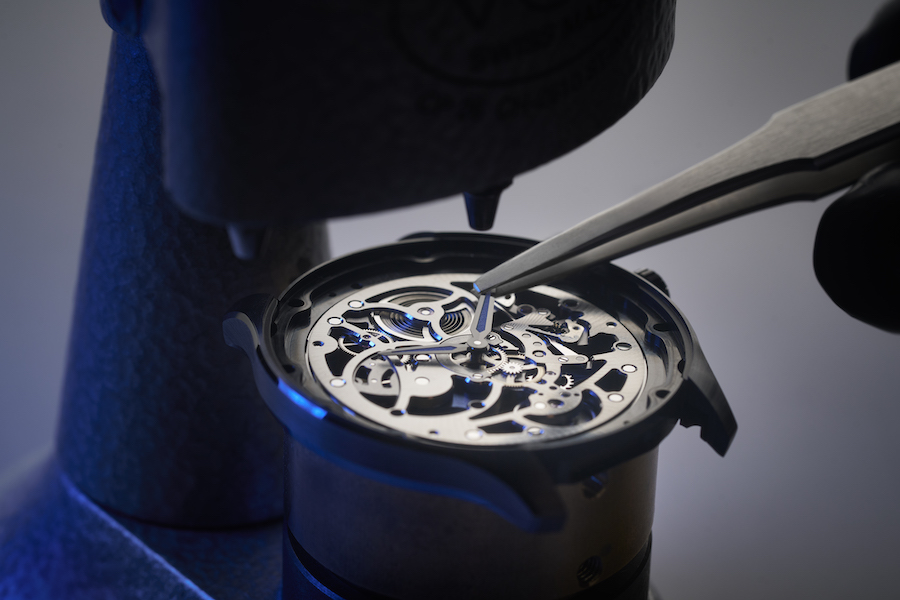
Piaget Polo Skeleton Ceramic watch
Swiss watch and jewelry brand Piaget once again brings one of its most iconic timepieces to fruition in a new and updated rendition designed to captivate horological fans around the world. Conceived of and unveiled decades ago by then-head-of-the-brand, Yves Piaget, the Piaget Polo is legendary. Now, the brand unveils its newest iteration – one that blends history and modernity: the Polo Skeleton Ceramic watch.
Since its debut in 1979 as a sophisticated sports watch, the Polo has been synonymous with boldness and elegance. The original Polo watches, crafted from 18-karat gold, featured a distinctive horizontal linear pattern across the dial, case, and bracelet, complemented by grooved case edges with alternating satin and polished finishes. This innovative design quickly became a hallmark of Piaget, setting the Polo apart as a watch that was both instantly recognizable and defiantly modern.

The new Piaget Polo Skeleton Ceramic watch, GOA49011, is crafted in ceramic and titanium.
Over the years, the Polo collection has evolved, incorporating various noble metals and steel. However, with the introduction of the Polo Skeleton Ceramic watch, Piaget takes a daring leap forward. This new iteration maintains the Polo’s signature inner cushion-cornered outline around the dial, but elevates the design with a skeletonized movement that is fully visible, offering a captivating view for both the wearer and admirers.
Crafted from high-tech ceramic and titanium, the Polo Skeleton Ceramic watch is a testament to Piaget’s commitment to craftsmanship and contemporary design. Measuring 42mm in diameter, the timepiece is the result of more than three years of meticulous development. The ceramic case, finished in a sleek jet-black hue, is a remarkable achievement in itself. At just 7.5mm thick—only 1mm thicker than the current steel and gold Polo Skeleton models—this ultra-thin architecture showcases the brand’s technical prowess, especially given the challenges of working with ceramic.

The Piaget Polo Skeleton Ceramic watch is 42mm in diameter and just 7.5mm in thickness.
Both ceramic and black DLC titanium are notoriously difficult materials to manipulate, far more rigid than steel or gold. Yet, Piaget was determined to push the boundaries and integrate these materials with two of its signature elements: skeletonization and ultra-thin design. This dedication to innovation has deep roots in the brand’s history. In the late 1940s, Piaget began experimenting with skeletonized movements in limited quantities, and in the 1980s, the Polo collection featured these intricate designs, including the famous 1984 Polo worn by Miles Davis. Piaget has also consistently led the industry in the development of ultra-thin movements, setting numerous records along the way.

Piaget Polo Skeleton Ceramic watch is powered by an in-house-made ultra-thin automatic skeletonized movement.
The heart of the new Polo Skeleton Ceramic watch is the in-house, ultra-thin 1200S1 automatic skeleton movement, adorned with color-treated bridges in a striking blue. With a 44-hour power reserve, this movement exemplifies Piaget’s expertise in blending aesthetic beauty with technical mastery. Notably, even many of the movement’s components are crafted from ceramic, further highlighting the brand’s innovative spirit.
The watch’s dial features a flange with Super-LumiNova indexes, as well as hour and minute hands that ensure readability in the dark. For the first time, Piaget has also applied Super-LumiNova to the rotor, adding a luminous touch to the timepiece. The Polo Skeleton Ceramic watch comes with two rubber straps—one black and one blue—allowing for easy customization thanks to the brand’s Singletouch interchangeable strap system. Water-resistant to 50 meters, this exceptional timepiece is available for $42,900.

The Piaget Polo Skeleton Ceramic watch retails for $42,900.
In this latest release, Piaget not only honors its rich heritage but also sets a new standard for contemporary watch design. The Polo Skeleton Ceramic watch is a bold statement of the brand’s unwavering dedication to innovation, craftsmanship, and elegance.





